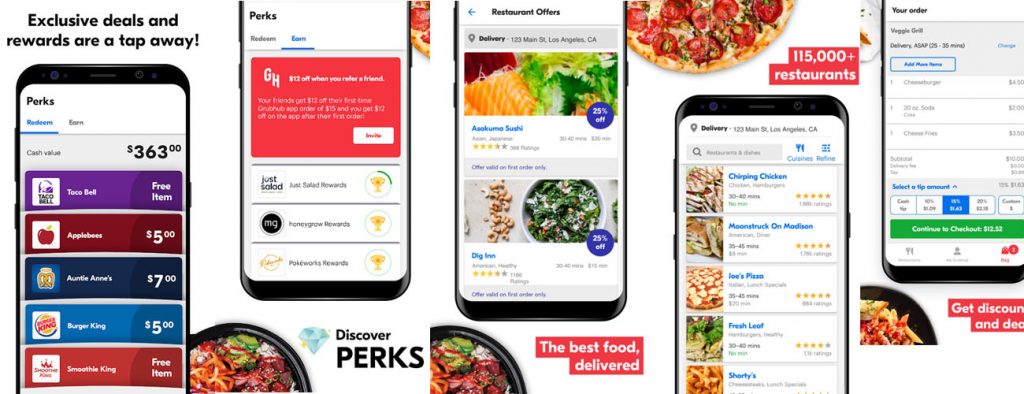The popularity of food delivery apps, on-demand restaurant apps, and other kinds of food delivery web & mobile apps has grown exponentially in the last two years. Worth noting that the leading names (companies) in this sector receive investments worth millions of dollars, and acquire innumerable customers daily.
As per a Statista report, the food delivery app sector will see massive growth of $2013,142 Mn by the year 2024. Yes, the growth prospect is immense but it is not easy to create, develop a brand new app and then launch it in the market and eventually succeed! You need to consult an agency, a mobile app development company to guide you from the scratch.

Lets’ delve deep and find insightful points to keep in mind while going for food delivery app development for your business.
Standard Business Models
Certain business models are followed in the process of food delivery apps. The very app created needs to ally with monetization strategies set by your business, you should know how to develop the app from scratch, market it, and reach your target audience with hopes and bright prospects.
As said a while back, it is possible to do this all by collaborating with a genuine mobile app development agency that can guide you from the scratch!
Let’s see those standard business models that are adopted towards developing a quality food delivery app for business!
P2C/ Aggregator Model
One of the major ways that a typical food delivery app operates is via the Peer-to-Consumer (P2C) model. Also called an aggregator model, it incorporates a system where customers/consumers can place their orders through some 3rd party service provider(just like Swiggy, Zomato).
So, this model involves an on-demand marketplace that acts as an enabler for online orders and home delivery of ordered food by customers. The latter can place orders using a mobile app or web app platform. Some popular names following this model are Grubhub, Amazon Restaurants, Eat24, and so on.
R2C/ Restaurant-To-Consumer Model
This kind of business model allows restaurants, food providers, or businesses to directly cater to their end consumers. They reach out to customers/consumers and deliver their orders directly to them. Food providers are usually full-fledged restaurants, and food trucks, that directly sell their ordered food to consumers.
Notable examples who have adopted the R2C model are Dominos, Pizza Hut, varied restaurant chains, and local food chains that send their delivery agents/delivery boys for home delivery of online orders. The very standard model is conducive for businesses that have limited resources and sitting space, and infrastructure to expand operations.
The pandemic has greatly boosted this model facilitating restaurant businesses to create specific food delivery apps for their business. Indeed businesses are flourishing thanks to the mobile app development idea duly imbibed in their core operations. This model is apt for smaller geographic locations catering to individuals directly.
So have you ever waited at the counter of a fast-food restaurant in doubt about what to order? Well, which could become an issue in days gone by – with the development of AI, many Food and Beverage Companies Leveraging AI, which is like preparing something special for us.
Food Delivery App Features
Once you have selected the business model most suitable to your business type, you get started with the custom food delivery app development process.
Normally, there are three features created in an app:
- Features for Customers
- Features for Delivery Agents
- Features for Admins/owners
Once you are clear with what business model you want to go for your food delivery app! You need to focus on the functional features of the app. A food delivery app has three prominent users as follows:
Features for Customers
- Easy SignUp feature
- Advanced Search with Filters feature
- Automated/ Real-Time Location Detection feature
- Access to In-depth Restaurant Information feature
- Smooth & Easy Order Placement feature
- Secured Online Payment feature
- Online Review/Comment/Rating feature
Features for Delivery Boys/Agents
- Creating User Profile feature
- Notifications/Alerts feature
- Multiple Deliveries Shedulement feature
- Integration of Google Maps feature
- Call & Chat feature
Features for Admin/Owner Dashboard
- Managing Order- Request feature
- Real-time Menu Update feature
- Payment/Commission Administration feature
- Offers/Coupons Code Generation feature
Additional Features
- Integrating app features for Android Wear & Apple Watch
- Geotargeting feature
- Contactless Delivery feature (Post Covid Measure)
Wrapping Words
Five basic steps to follow while starting the food delivery app development process for your specific business – thorough research & analysis of the market, choosing your most suitable business model, selecting app features, choosing a technology stack(cross-platform suitable), and hiring a dedicated web & mobile app development company to kickstart your project.
From now on, there’s no looking back, as you board your unique app journey making you competitive in the market, fetching desired business goals!
Are you an entrepreneur, Start-UP, SMB, or an enterprise in the F&B sector and want to create a unique, state-of-the-art Food Delivery App suitable for your business? Contact Us and get started!

